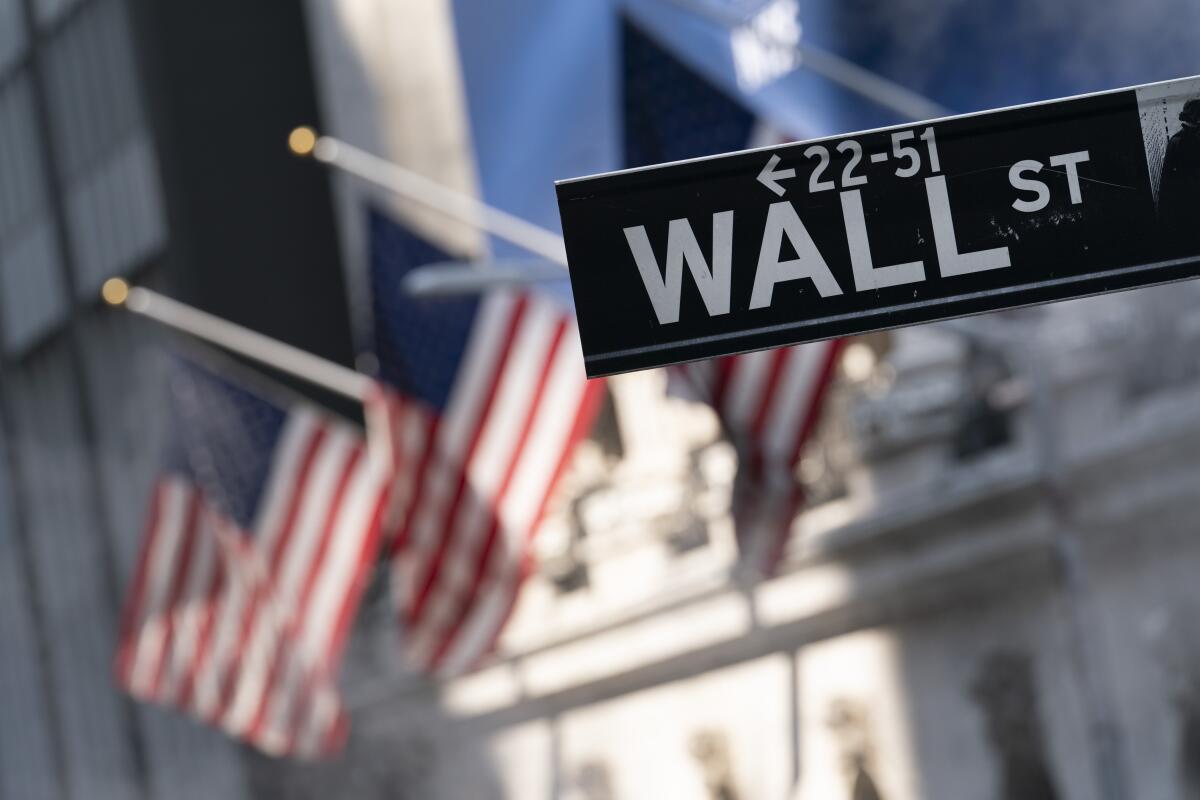Stocks end mixed amid earnings, economic updates

- Share via
Stocks gave back some of their recent gains Thursday as a choppy day of trading on Wall Street ended with a mixed finish for the major indexes.
The Standard & Poor’s 500 index closed 0.1% lower after wavering between small gains and losses. The Dow Jones industrial average fell 0.3%, while the Nasdaq composite rose 0.4%.
Energy stocks, the biggest gainers in the benchmark S&P 500 so far this year, were the biggest drag on the market as the price of U.S. crude oil fell below $90 a barrel for the first time since early February, before Russia’s invasion of Ukraine.
Gains in technology stocks, retailers and elsewhere helped keep the losses in energy, healthcare and other sectors in check.
The U.S. Department of Transportation proposed rule changes Wednesday to make it easier for airline passengers to collect refunds for canceled or delayed flights.
The muted trading came as investors continued to review the latest updates on the economy and corporate earnings ahead of the government’s monthly snapshot of the nation’s job market Friday.
Investors are eyeing jobs data to gauge whether any tightening in the labor market might prompt the Federal Reserve to eventually ease up on its interest rate increases as it fights inflation, potentially lessening the chance of the central bank bringing on a recession.
“They wanted to quell demand and temper inflation, and they wanted to do so without unduly impacting the labor market in a negative way,” said Katie Nixon, chief investment officer for Northern Trust Wealth Management. “So far, the Fed is going to assess all of this as according to plan, and they’re going to keep going.”
The S&P 500 slipped 3.23 points to 4,151.94, and the Dow dropped 85.68 points to 32,726.82. The Nasdaq rose 52.42 points to 12,720.58. The Russell 2000 index of smaller company stocks gave up 2.47 points, or 0.1%, to close at 1,906.46.
All of the major indexes except for the Dow are on pace for weekly gains after rallying Wednesday.
The price of U.S crude oil fell 2.3% to $88.54 a barrel Thursday, weighing on energy company stocks. Exxon Mobil slid 4.2%, and Occidental Petroleum fell 5.8%.
Healthcare stocks also lost ground. Eli Lilly dropped 2.6%.
Tech stocks and a mix of retailers, home builders and industrial companies made solid gains. Advanced Micro Devices climbed 5.9%, Amazon added 2.2%, Lennar rose 3.4% and Deere gained 1.7%.
Stocks have meandered this week, leaving major indexes mostly higher. August’s gain follows a standout July that was the S&P 500’s best month since late 2020. But markets remain volatile as investors try to determine the economy’s path ahead amid the highest inflation in four decades and efforts from central banks to fight higher prices.
Earnings remain in focus on Wall Street as investors look for more clues on how inflation is affecting industries. Twinkie maker Hostess fell 3.9% after giving investors a disappointing profit forecast for the year. Bleach and consumer products maker Clorox fell 4.7% after also announcing a weak earnings forecast.
Companies have been raising prices on food, clothing and many other goods. A surge in gasoline prices throughout the year worsened inflation and prompted spending cutbacks.
The Federal Reserve has been aggressively raising interest rates to try to slow the economy and fight inflation, along with other central banks. The Bank of England on Thursday initiated its biggest rate increase in more than a quarter of a century.
Recent economic data from retail sales and employment reports have shown that the economy is already slowing down.
“The cure for high inflation is sometimes high inflation,” Nixon said. “The narrative that we might have been at or past peak inflation is being validated by some of the data coming out.”
The surge in consumer demand and lack of supplies for many goods initially drove inflation. The resulting higher prices have now prompted consumers to ease off spending. But the Fed’s aggressive interest rate policy has investors concerned that the central bank could hit the brakes on the economy too hard and veer it into a recession.
That concern is being reflected by the bond market, in which the yield on the two-year Treasury remains higher than the yield on the 10-year Treasury. It’s a relatively rare occurrence that some see as a precursor for a recession within a year or two.
The yield on the 10-year Treasury fell to 2.66% from 2.74% late Wednesday.
A bright point in the broader economy has been a strong employment market. New data from the Labor Department on Thursday showed the number of Americans applying for jobless benefits last week rose in line with expectations, as the number of unemployed continues to rise modestly.
The latest data follow updates this week showing that job openings eased but still remain at record highs. The Labor Department’s July jobs report Friday is expected to show some signs of tightening.
More to Read
Inside the business of entertainment
The Wide Shot brings you news, analysis and insights on everything from streaming wars to production — and what it all means for the future.
You may occasionally receive promotional content from the Los Angeles Times.











